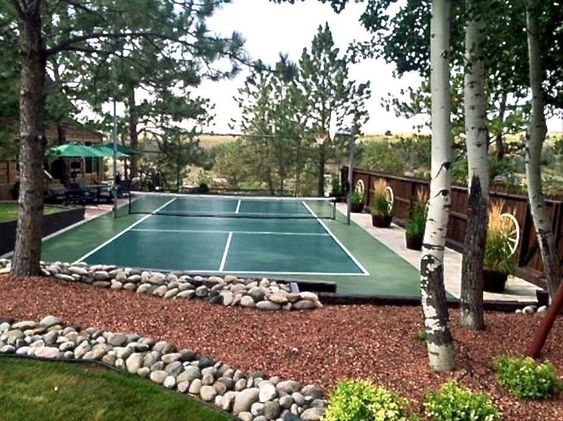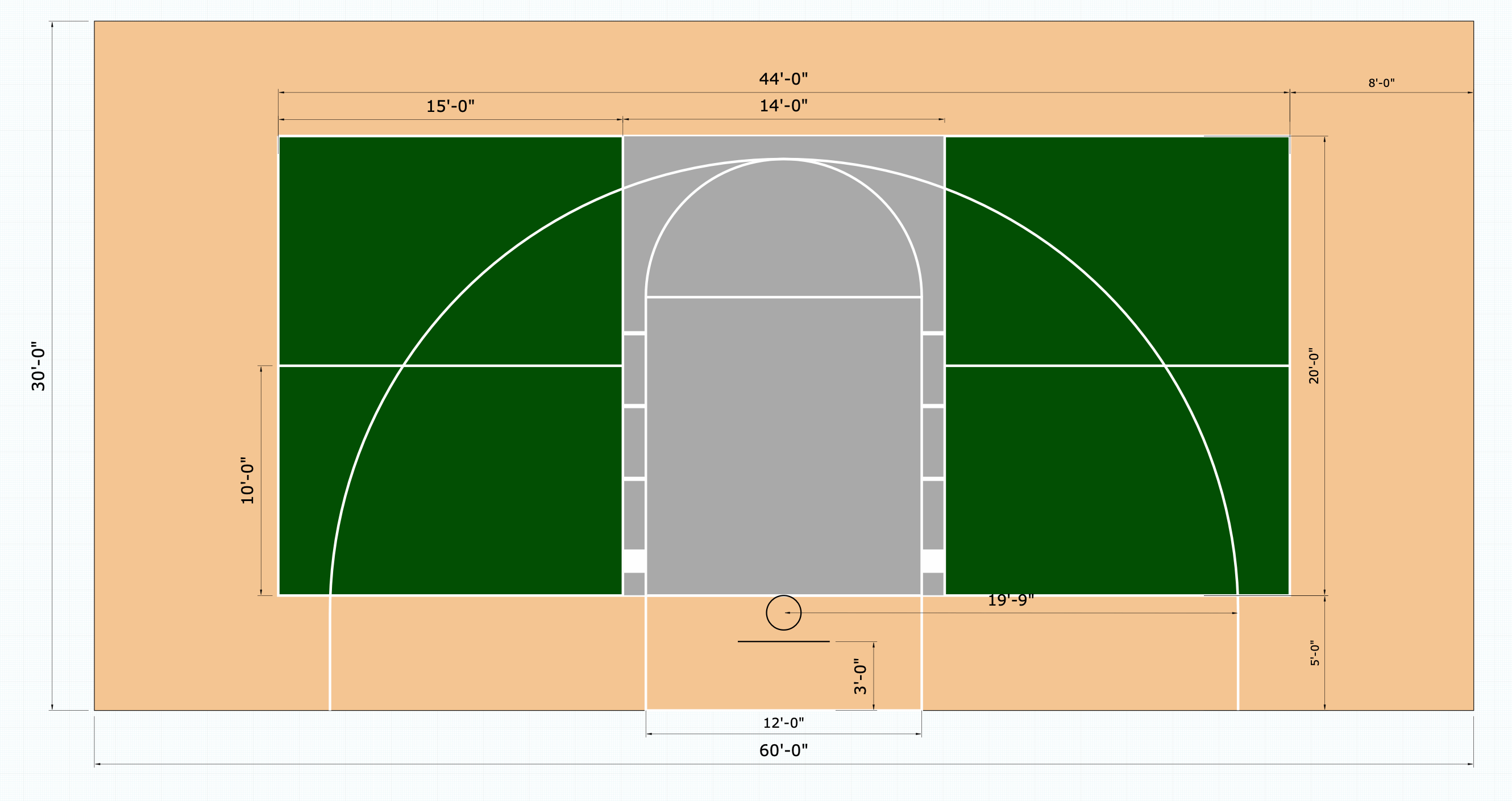The Essential Providers Needed for Structure and Keeping High-Quality Pickleball Courts
The building and upkeep of top quality pickleball courts pivot on an array of important solutions that ensure optimum efficiency and gamer safety and security. Key considerations include the option of ideal surface area products, adherence to standardized measurements, and the application of efficient drainage systems.

Selecting the Right Surface Products
Picking the ideal surface area products for pickleball courts is crucial to ensuring optimum playability and safety. The option of surface directly influences game dynamics, player comfort, and injury avoidance. Usual products consist of asphalt, concrete, and specialized acrylic finishes, each offering distinct advantages and considerations.
Asphalt is often preferred for its cost-effectiveness and sturdiness; nonetheless, it calls for routine upkeep to avoid fracturing and surface destruction. Concrete deals a durable and lasting choice, providing a smooth playing surface that can withstand hefty use. It may require added therapy to enhance traction and lower trickiness.
Acrylic finishings have actually gotten appeal as a result of their capacity to boost efficiency qualities, such as shock absorption and traction, while additionally enabling modification in shade and design. These finishes can be applied over existing surfaces, making them a versatile option for court upgrades.
Eventually, the choice of surface area material ought to align with the meant use of the court, budget restraints, and regional climate problems. Consulting with specialists who specialize in sports facility building and construction can supply important understandings, ensuring that the chosen materials fulfill both gamer requirements and safety and security requirements.
Correct Court Capacities and Format

The net elevation is set at 36 inches at the sidelines and 34 inches in the center, which is critical for preserving the honesty of the game. Additionally, the court ought to be surrounded by at the very least 3 feet of clear space on all sides, enabling secure motion and protecting against collisions with surrounding challenges.
Positioning is an additional important aspect of court layout. Preferably, courts need to be aligned north-south to decrease the impact of sunlight glow on players. Focus to these information will certainly enhance the general playing experience and advertise fairness in competitors. By adhering to these specs, center managers can guarantee that their pickleball courts satisfy the necessary criteria for both leisure and specialist play.
Reliable Drain Solutions
Efficient water drainage options are vital for keeping the quality and playability of pickleball courts, specifically after stormy weather condition. Illinois and midwest. Appropriate drain systems protect against water accumulation on the court surface area, which can result in surface area degradation, mold and mildew development, and security hazards during play
To attain efficient drain, it is essential to design the court with a slight incline, ideally around 1-2% away from the. Additionally, including a properly designed water drainage system, such as perforated pipelines or French drains, can further boost water management.
The choice of surface materials also plays a vital function in drainage. Permeable surface areas, like certain sorts of asphalt or specialized sporting activities surfaces, enable water to penetrate, minimizing the danger of standing water. Frequently clearing particles from seamless gutters, drains, and bordering locations is essential to maintain ideal efficiency. By carrying out these efficient drain solutions, facility managers can make sure that pickleball courts remain playable and safe, thus improving the total experience for gamers and keeping the durability of the financial investment.
Normal Maintenance Practices
While the satisfaction of pickleball is usually linked to the top quality of the court, routine upkeep practices are crucial for maintaining its condition and guaranteeing a safe having fun environment. The very first step in maintenance includes routine examinations to determine any cracks, surface wear, or particles that might influence gameplay.
Cleaning up the court consistently is essential, as this avoids the buildup of dirt, leaves, and other materials that can degrade the surface area and create dangers. A stress washer or a broom can efficiently get rid of debris while ensuring that the court surface stays undamaged.
In addition, periodic resurfacing is required to maintain the court's having fun characteristics and extend its life expectancy. This may entail applying a new layer of pop over to this web-site acrylic or sealant to shield against moisture and UV damages.
Moreover, keeping the surrounding locations, such as fencings and nets, adds to the total security and aesthetic appeals of the facility. Developing an upkeep schedule that includes these practices official site will not just enhance the having fun experience but additionally protect against expensive repairs in the future. Regular focus to these facets ensures that pickleball courts remain an inviting and risk-free setting for players of all skill levels.
Illumination and Ease Of Access Factors To Consider
Appropriate illumination and availability factors to consider are crucial components in the style and upkeep of pickleball courts. Adequate lights not only boosts the playing experience but likewise makes sure safety and security for players and viewers during evening or low-light conditions. Courts need to be lit up with high-quality LED illumination, offering consistent illumination while reducing glow. The positioning of components have to be strategically intended to prevent darkness and make sure clear exposure of the court borders and internet.
Access is similarly crucial to promote inclusivity. Courts need to follow the Americans with Disabilities Act (ADA) standards, making sure that they are quickly obtainable for individuals with flexibility problems. This includes providing ramps, suitable signs, and marked seating locations for spectators (Illinois and midwest). Additionally, executing a smooth surface area and making certain that the surrounding locations are totally free of challenges can promote much better access.
Including both lighting and availability factors to consider not just improves the general user experience however likewise emphasizes the dedication to developing an inclusive and inviting environment for all players. By focusing on these aspects, centers can cultivate a vibrant pickleball area that attracts gamers of numerous ability degrees and backgrounds.

Final Thought
To conclude, the establishment and upkeep of high-grade pickleball courts demand an extensive strategy that consists of selecting ideal surface area materials, sticking to standard measurements, and executing reliable drainage systems. about his Routine upkeep and inspections are essential for durability, while appropriate lighting and ease of access attributes promote a risk-free and comprehensive setting for gamers. Collectively, these vital solutions not just boost the playability and comfort of the courts however likewise contribute dramatically to injury avoidance and total fulfillment of customers.